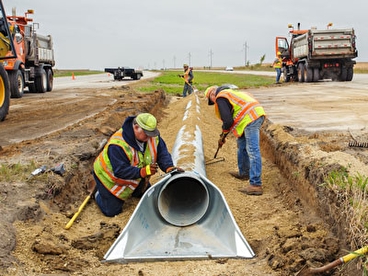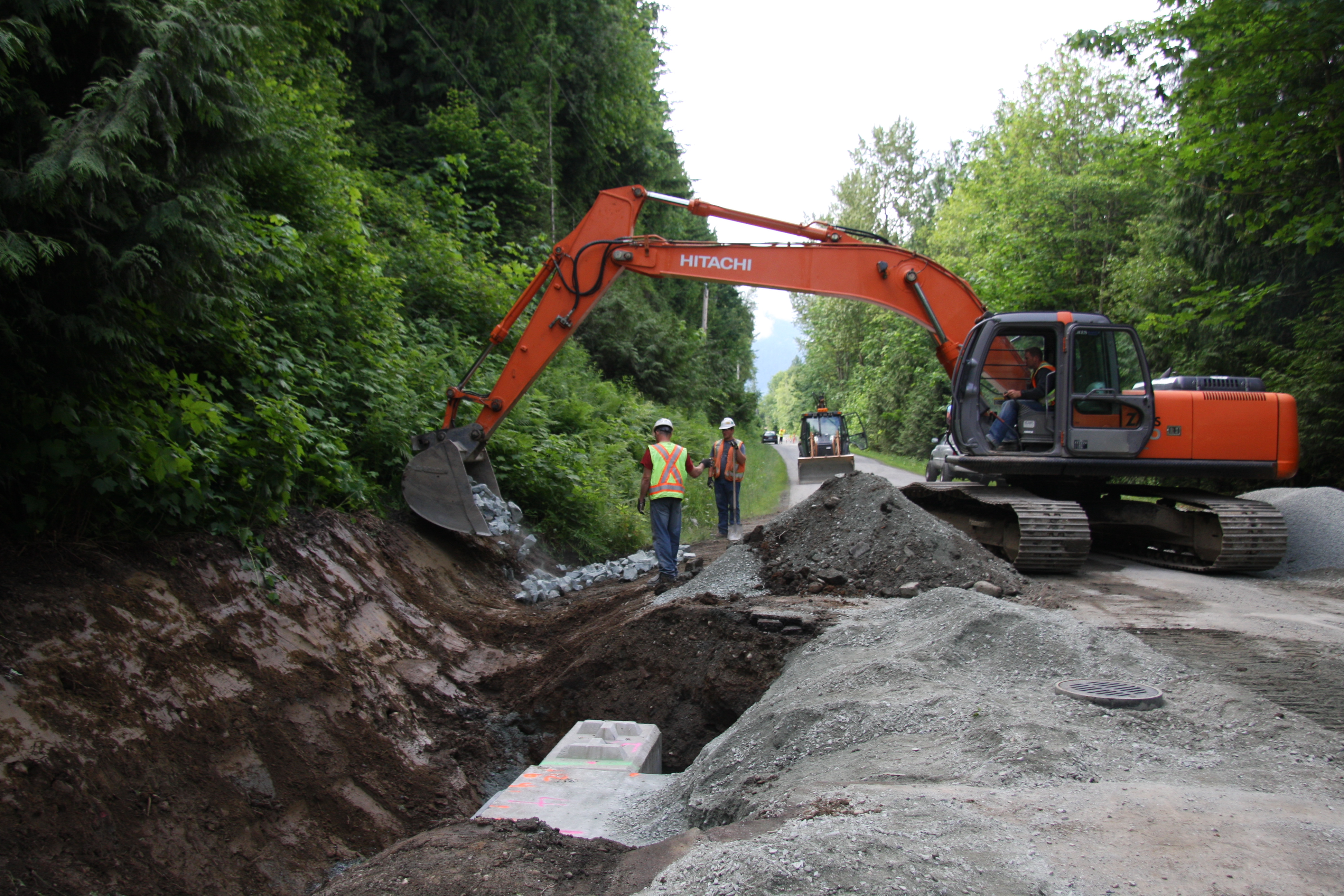Culvert Setup Made Easy: Step-by-Step Overview for Success
From selecting the ideal culvert size to incorporating proper drain measures, each action in the installation process plays an essential function in the capability and long life of the culvert system. Remain tuned to discover the necessary steps and considerations that can make culvert installation a seamless and effective undertaking.
Picking the Right Culvert Dimension
Picking the proper culvert size is essential for making certain reliable water circulation and structural honesty in culvert setup projects - Pad Construction. The size of the culvert directly influences the flow capacity of water via the structure. A culvert that is also tiny can bring about flooding and overflow, while one that is also big may lead to decreased water speed, potentially causing debris accumulation and blockages
To determine the ideal culvert size, factors such as the watershed location, top circulation rates, and hydraulic effectiveness requirement to be thoroughly thought about. Calculations based upon these specifications assist in choosing a size that can sufficiently manage the anticipated water quantity while minimizing the threat of clogs and architectural failure.
It is vital to get in touch with engineering standards and requirements to make sure that the picked culvert size meets the project requirements and regional guidelines (Pad Construction). By choosing the best culvert dimension, task supervisors can maximize water circulation, protect against potential problems, and boost the general effectiveness and longevity of the culvert installation
Preparing the Installation Website
Efficient culvert installation necessitates careful prep work of the setup site to make certain ideal architectural support and performance. Prior to beginning the setup procedure, it is essential to get rid of the website of any kind of debris, plants, or obstructions that might hinder the culvert's placement.
Additionally, it is very important to take into consideration factors such as dirt structure, groundwater degrees, and ecological effects when preparing the installment website. Performing a comprehensive site assessment can help identify any kind of possible difficulties or risks that might influence the culvert's performance. By taking the time to prepare the installment site properly, you can assist assure an effective culvert installation that satisfies architectural demands and ensures long-term performance.
Placing the Culvert Correctly

The quality at which the culvert is placed is essential for preserving a correct slope for water flow. A steady incline helps prevent merging and promotes efficient water drainage. Furthermore, the culvert must be oriented properly to make certain that the inlet and electrical outlet are in the proper locations. This positioning is vital for the culvert to function properly in handling water the original source flow.
Backfilling and Compacting the Soil
Appropriate backfilling and compaction of the soil around the culvert is necessary to ensure security and protect against prospective concerns in the future. When the culvert is correctly positioned, the following essential action is to backfill the area around it with ideal product. The backfill product should be totally free from rocks, particles, and raw material to prevent damage to the culvert. It is recommended to utilize granular material such as sand or crushed rock for backfilling, as it gives good drainage and compaction residential or commercial properties.
Compaction aids in reducing the possibilities of negotiation and guarantees uniform support around the culvert. It is important to compact the soil evenly on all sides of the culvert to keep its structural stability.
Appropriate backfilling and compaction not just give stability to the culvert but also assist in stopping soil disintegration and keeping the longevity of the culvert system.
Making Sure Appropriate Drain Integration
Integrating efficient drainage remedies plays a crucial function in the general performance and longevity of culvert setups. Correct drain assimilation is crucial for handling water circulation, avoiding disintegration, Full Article and ensuring the architectural stability of the culvert system. To accomplish this, it is essential to make an extensive drainage strategy that thinks about aspects such as the quantity of water expected, the topography of the location, and the kind of dirt existing.

Additionally, integrating attributes like erosion control steps, such as riprap or greenery, can even more improve the performance of the water drainage system. By very carefully planning and applying these water drainage solutions, culvert installments can work successfully and withstand the test of time.
Conclusion
To conclude, appropriate culvert setup is crucial for maintaining reliable drainage systems. By picking the ideal culvert dimension, preparing the installation site, positioning the culvert correctly, backfilling and compacting the dirt, and making sure proper drainage integration, success can be attained. Complying with these steps will certainly help make sure the long life and effectiveness of the culvert, inevitably adding to the total success of the drainage system.
Comments on “Expert Culvert Installation for Sturdy Infrastructure”